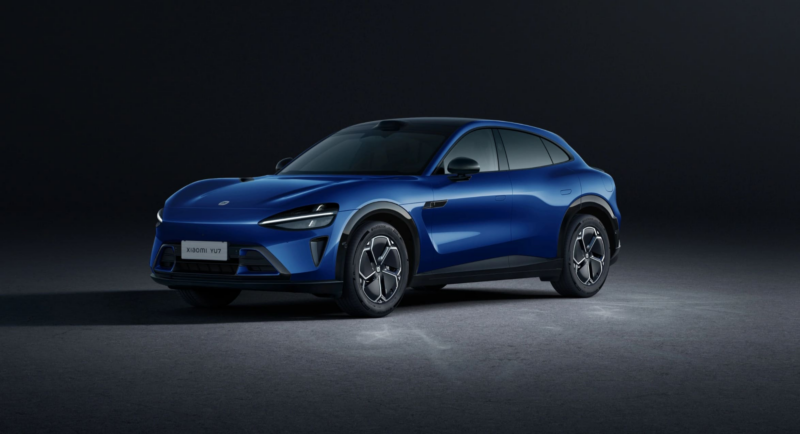Xiaomi YU7 Max achieved 101.2% of its rated horsepower, independent testing reveals
The recently delivered Xiaomi YU7 Max has proven itself a worthy successor in the company’s electric vehicle lineup, with Chinese media Auto Sohu’s wheel horsepower testing revealing performance figures that exceed the manufacturer’s claims.
The YU7 Max comes equipped with an upgraded V6S PLUS rear axle motor compared to the SU7 Max’s V6S, pushing the combined maximum horsepower to a claimed 690 hp. The testing revealed this figure is an understatement.
Without activating the Boost mode, the YU7 achieved a 97% power efficiency rate at the wheels. The power curve demonstrates mature engineering with a gradual initial power buildup ensuring comfort, while reserving higher output for mid and high-speed ranges – ideal for highway overtaking. Notably, the torque plateau maintains maximum output at speeds below 100km/h, giving drivers access to full torque in everyday driving situations.
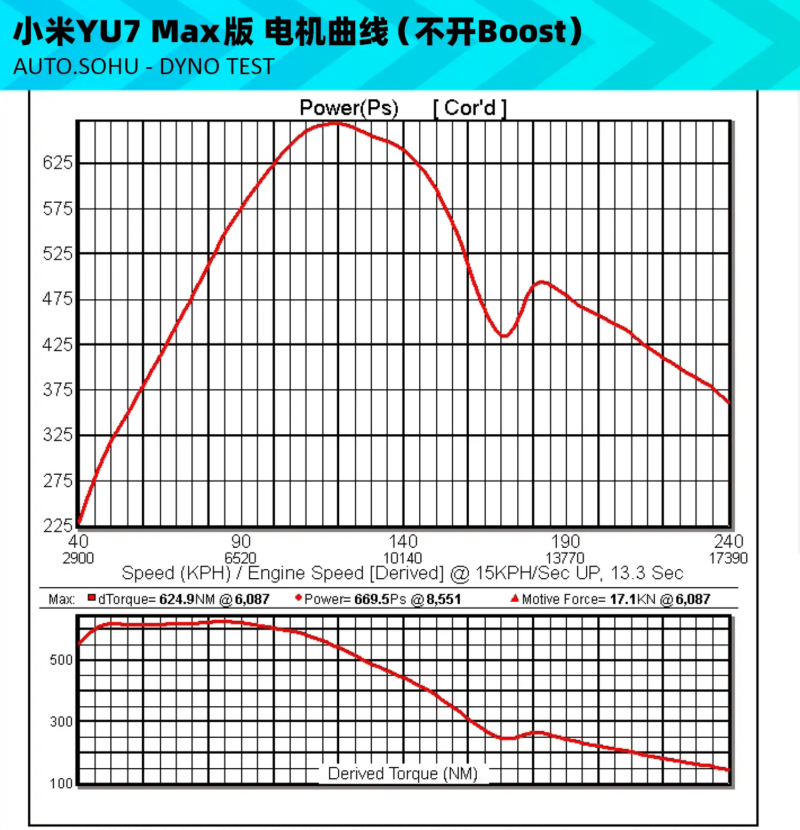
When Boost mode is engaged, the performance curve changes. The maximum power jumps to 698.1 hp – exceeding the official 690 hp rating and achieving what’s known as “reverse understatement.” The power curve shifts left with maximum output occurring earlier and maintaining a small power plateau.
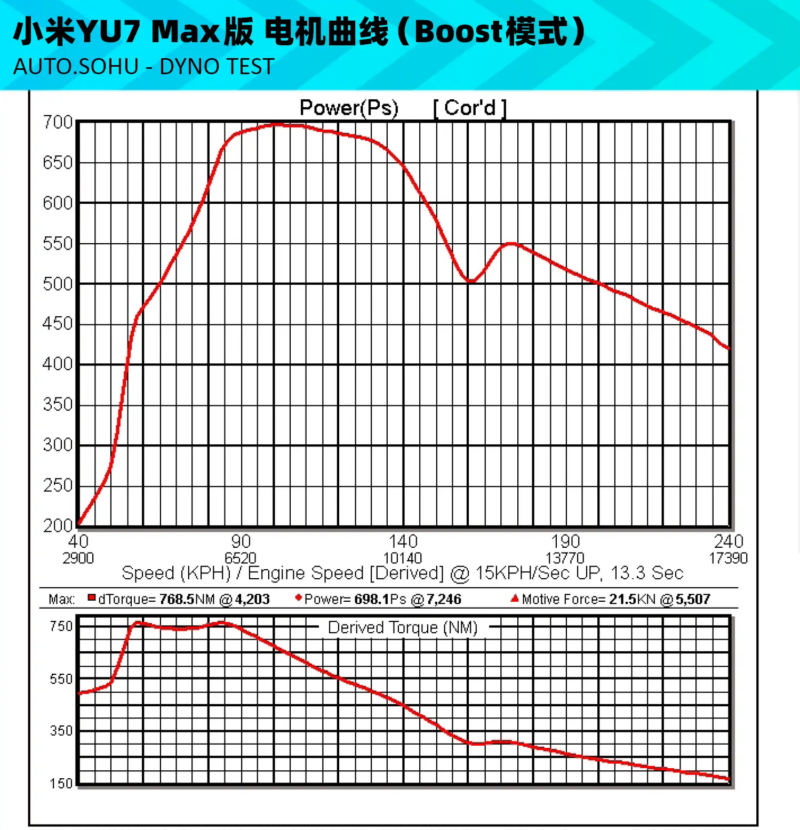
This 101.2% wheel horsepower efficiency makes the YU7 Max one of only four vehicles in Sohu’s testing history to deliver more power than officially claimed.
Power performance ranking
| Rank | Vehicle Model | Acceleration 0-100km/h (s) | Official power specs (hp/N·m) | Actual performance (hp/N·m) | Power achievement rate |
|---|---|---|---|---|---|
| 1 | 2025 Zeekr 007 GT 100kWh AWD | 3.29 | 646/710 | 720/690 | 111.5% |
| 2 | 2024 Zeekr 001 100kWh YOU Version | 3.46 | 789/810 | 877/750 | 111.2% |
| 3 | Wuling Hongguang Mini EV PLUS 510km 4-seater | 10.37 | 102/180 | 104/189 | 102.0% |
| 4 | Xiaomi YU7 Long Range AWD Max | 3.32 | 690/866 | 698/769 | 101.2% |
| 5 | Luxeed L7 736km Ultra | 3.77 | 496/- | 490/752 | 98.8% |
| 6 | Smart #1 Brabus Performance Edition | 3.66 | 428/543 | 423/665 | 98.8% |
| 7 | Marvel F7 Long Range Pro | 5.87 | 340/450 | 333/463 | 97.9% |
| 8 | Nio ET5 75kWh | 3.67 | 490/700 | 479/736 | 97.6% |
| 9 | Neta S AWD Large Version | 4.13 | 462/620 | 449/632 | 97.2% |
| 10 | Zeekr 001 AWD YOU Edition 4-seater | 4.04 | 428/543 | 414/615 | 96.7% |
| 11 | Ford Mustang Mach-E GT | 4.17 | 488/860 | 469/731 | 96.1% |
| 12 | Lotus Electre R+ | 3.22 | 905/985 | 867/824 | 95.8% |
| 13 | Leapmotor C01 RWD Ultra Long Range Edition | 7.41 | 272/360 | 260/338 | 95.6% |
| 14 | Brilliance BMW i3 eDrive 35L | 6.08 | 286/400 | 273/446 | 95.5% |
| 15 | Geely Panda Mini 200km Dynamic Panda | N/A | 41/110 | 39/91 | 95.1% |
| 16 | Audi RS e-tron GT | 3.34 | 598/830 | 563/730 | 94.1% |
| 17 | Avatr 11 Long Range Dual Motor Flagship | 4.30 | 578/650 | 542/645 | 93.8% |
| 18 | Zeekr 007 RWD Intelligent Version 75kWh | 5.05 | 422/440 | 395/417 | 93.6% |
| 19 | Smart #3 Brabus Performance Edition | 3.81 | 428/543 | 399/659 | 93.2% |
| 20 | BMW i4 M50 | 3.81 | 544/795 | 507/676 | 93.2% |
| 21 | Brilliance BMW i5 eDrive 35L | 6.19 | 286/410 | 264/402 | 92.3% |
| 22 | Geely Xingyuan UP 410km Exploration+ Edition | 10.14 | 116/150 | 107/184 | 92.2% |
| 23 | Nio ET7 100kWh Long Range Premiere Edition | 3.67 | 653/850 | 597/712 | 91.4% |
| 24 | Polestar 2 2021 Dual Motor Long Range Edition | 4.73 | 408/660 | 373/535 | 91.4% |
| 25 | Mercedes-Benz EQS 450+ Pioneer Edition | 6.18 | 333/568 | 303/470 | 91.0% |
| 26 | BYD Seal Intelligent Version 410km Fashion Edition | 7.83 | 177/290 | 161/303 | 91.0% |
| 27 | Brilliance BMW i3 eDrive 40L | 5.38 | 340/430 | 308/492 | 90.6% |
| 28 | Marvel R7 Flagship High Version | 4.13 | 544/700 | 491/663 | 90.3% |
| 29 | Tesla Model 3 RWD | 6.31 | 264/340 | 238/330 | 90.2% |
| 30 | Porsche Taycan Turbo Cross Turismo | N/A | 625/850 | 563/735 | 90.1% |
In acceleration testing, the YU7 Max recorded a 0-100km/h time of 3.32s, slightly behind the official 3.23s claim. It completed the quarter-mile in 11.11s with a GPS-verified terminal speed of 204.51km/h, while 60-160 mph acceleration took 4.65s.
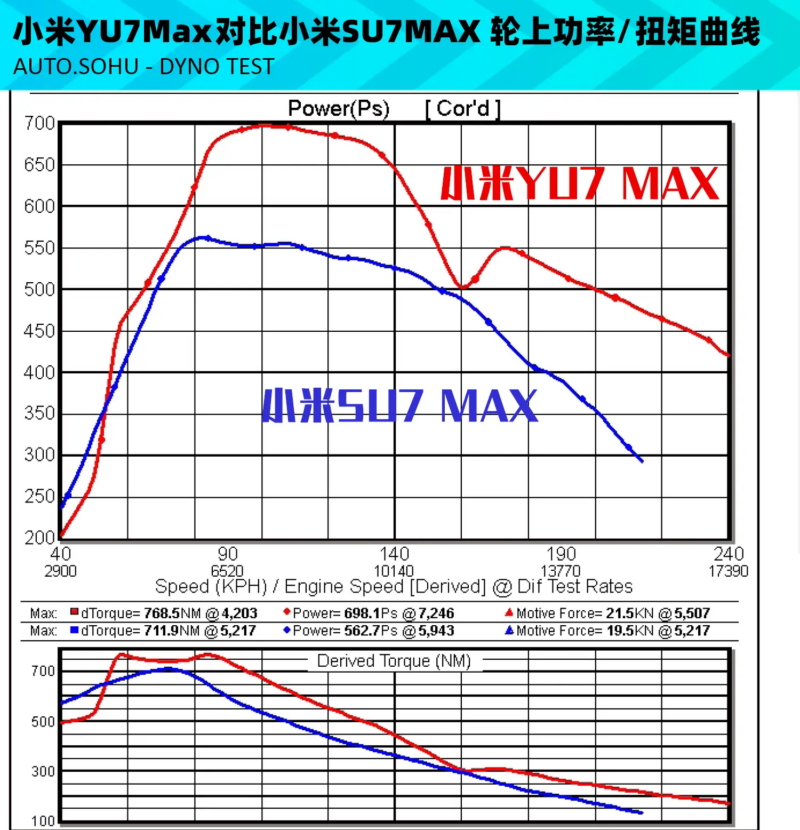
Compared to the SU7 Max, the YU7 Max exhibits clear advantages above 80 km/h, although its acceleration times are slightly slower. This can be attributed to the YU7 Max carrying an additional 200kg – the extra power largely compensating for the increased weight rather than delivering faster acceleration.
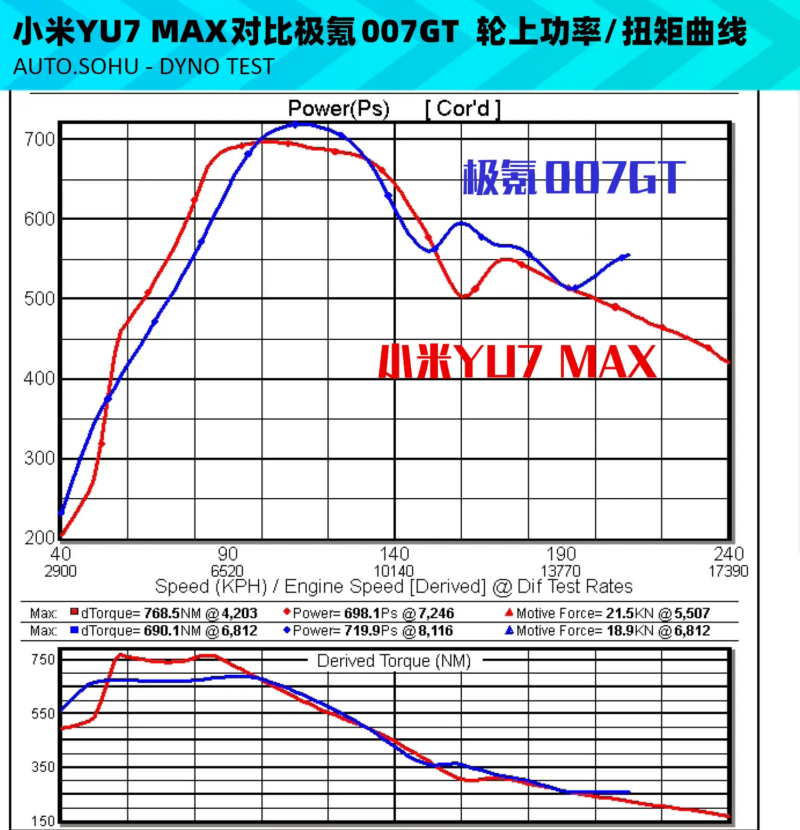
When compared with the recently tested Zeekr 007 GT, both vehicles share similar power curves, although the Zeekr’s 50 kg weight advantage gives it a slight edge in acceleration tests.
Read also (range test by the same team):



